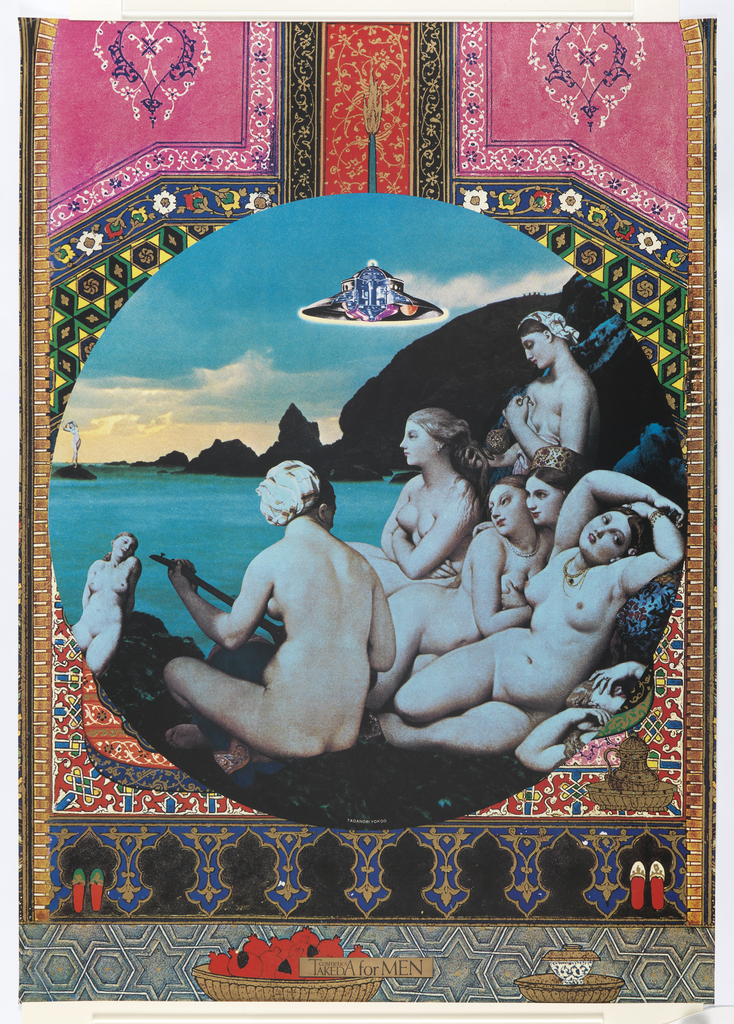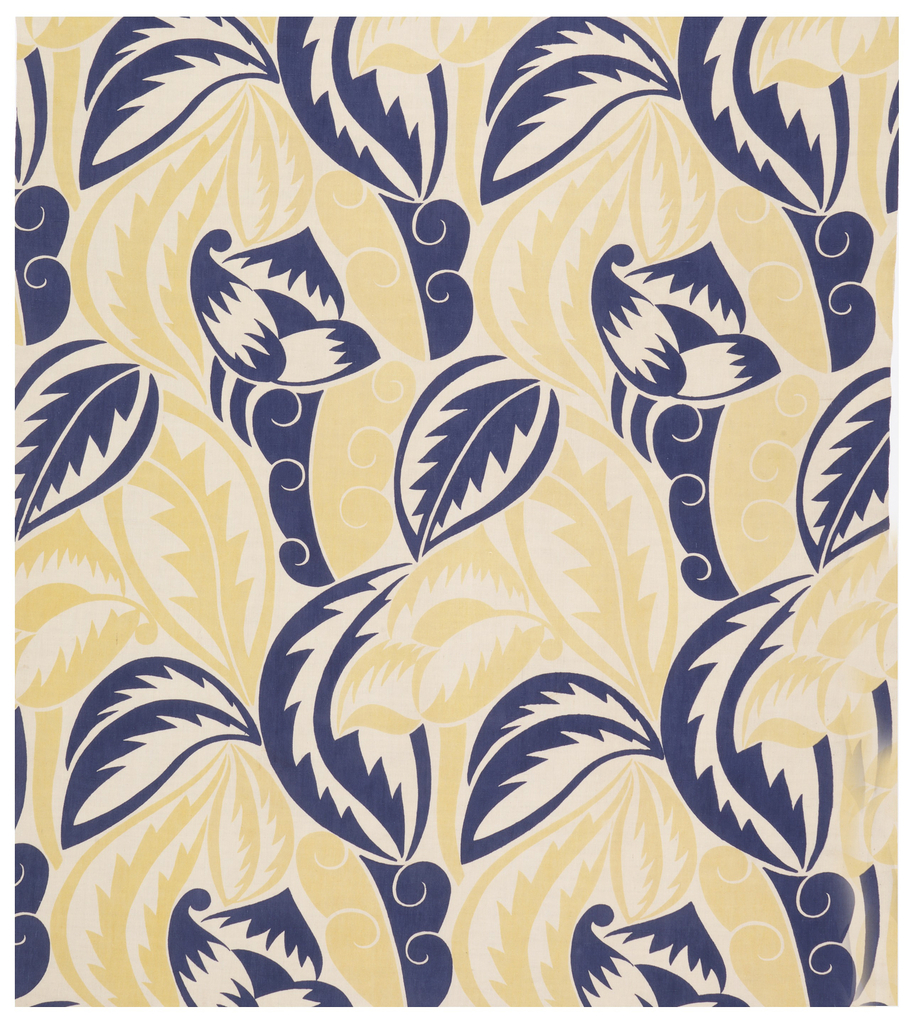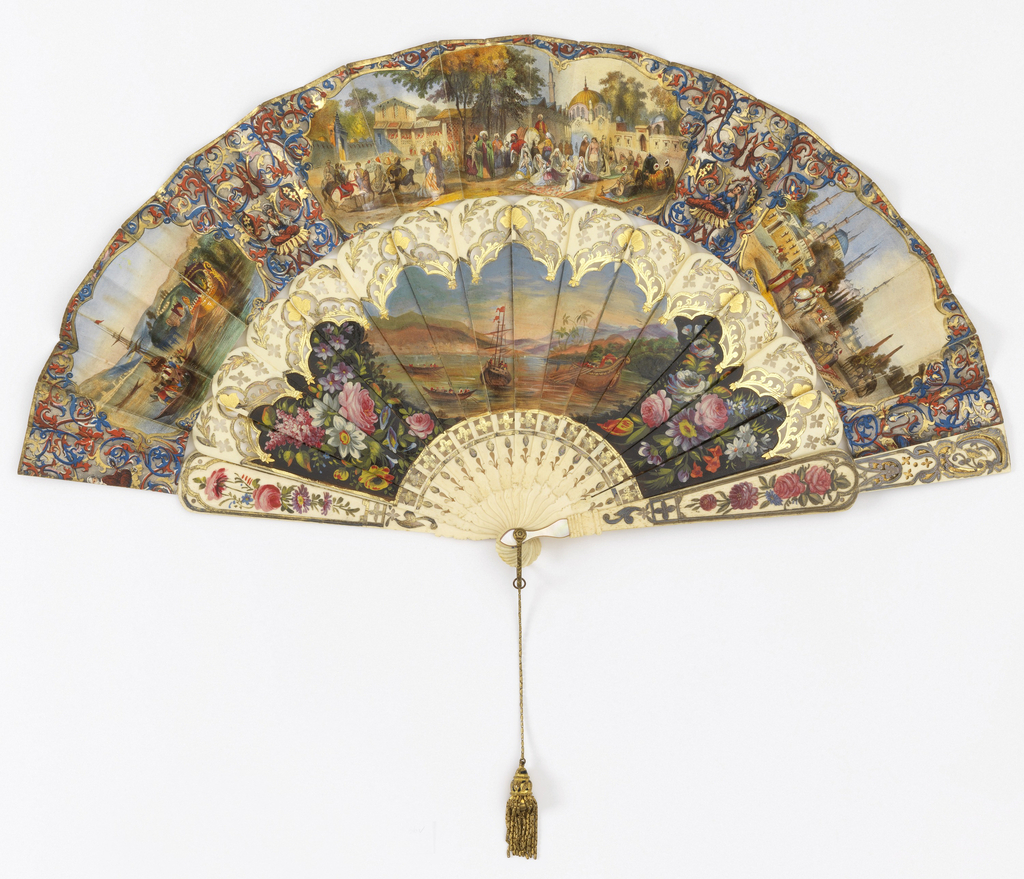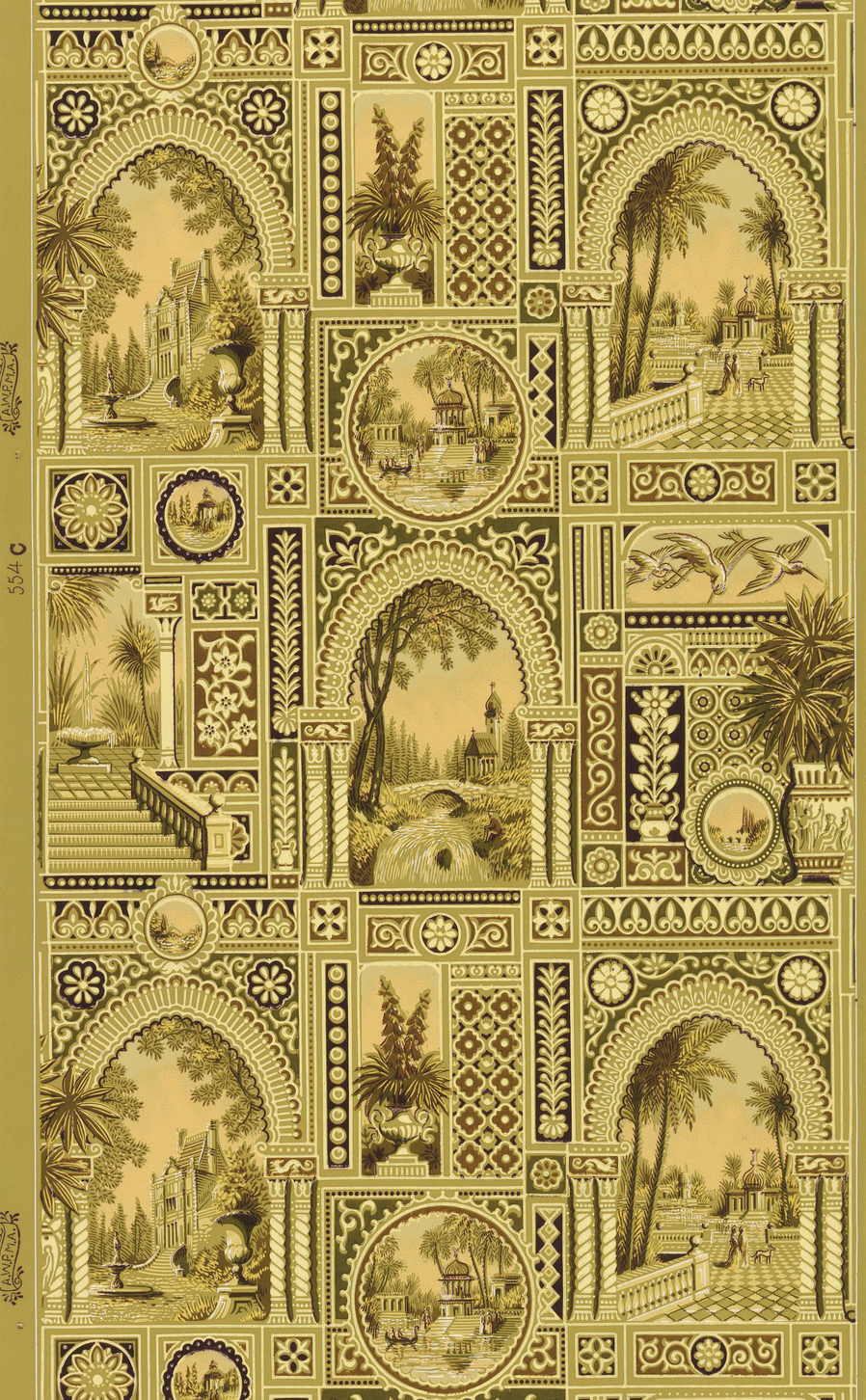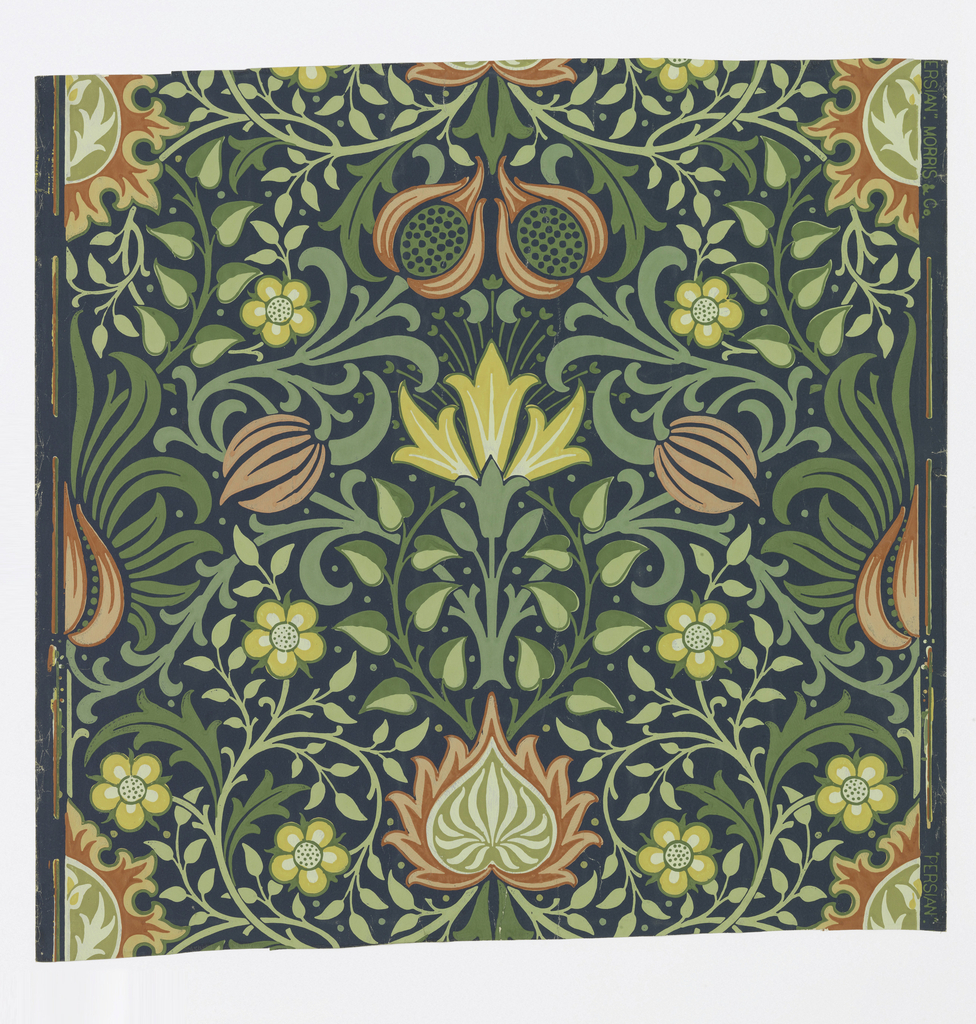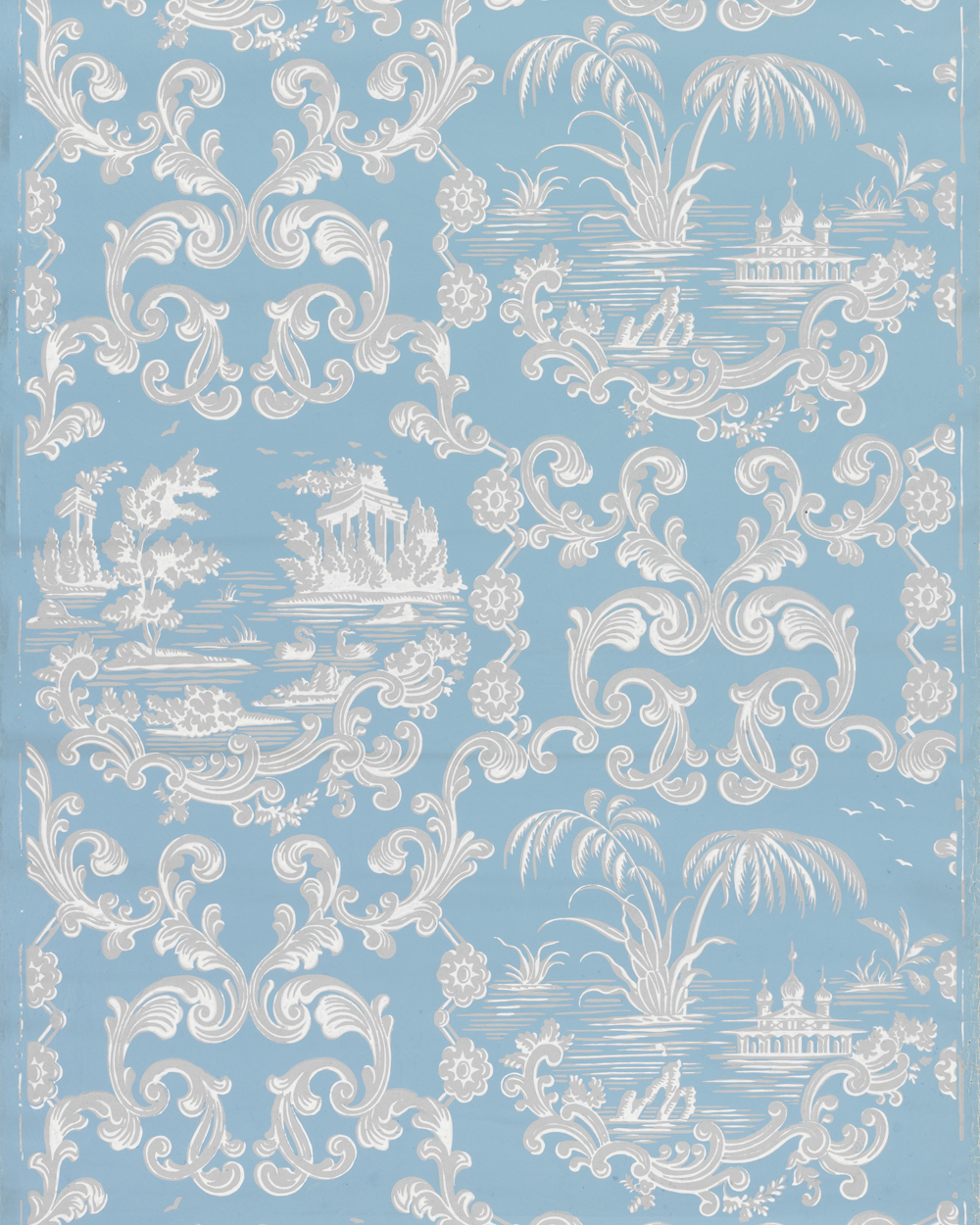“One of my motives for becoming a graphic designer,” said the Japanese designer, Tadanori Yokoo, “was to make tourist posters. As a result, all my pieces end up looking like tourist posters. The only thing is that these posters are about places that don’t exist on earth. They may be about a lost paradise.”[1] Tadanori...
Now on view in The Jazz Age: American Style in the 1920s, this Dufy textile proclaims modernity in its abstracted pattern.
This fan’s printed scenes of the Ottoman Empire are after the English architect and landscape painter Thomas Allom (1804-1872), whose drawings were engraved and published in the 1840 book, Constantinople and the Scenery of the Seven Churches of Asia Minor. [1] The center image is of the Arut Bazaar, a female slave market in Constantinople....
Vertically stacked archways and medallions made of Moorish tiles frame views of architecture from far off lands in this sidewall from the last quarter of the nineteenth-century. An Indian Gazebo, Turkish Mosque, French Chateau and even an onion-domed Russian church all make appearances. Palm trees, flocks of storks, waterfalls and elegant stone staircases add to...
This paper focuses on the exotic pomegranate plant, which is native to Persia (present-day Iran). Persian was introduced in 1895 and is woodblock printed in six colors. It was a common design motif to show the life cycle of plants in floral wallpapers. The densely woven pattern containing the pomegranate fruit, stylized floral and scrolling...
This handsome nineteenth century French paper features a block printed pattern of white and gray on a powder-blue background. Rococo Revival scrollwork frames two alternating landscape vignettes of far off and exotic destinations, and the whole pattern repeats vertically. Once scene show idyllic islands topped with classical columned temples. Wind-blown trees, flying gulls and a...
